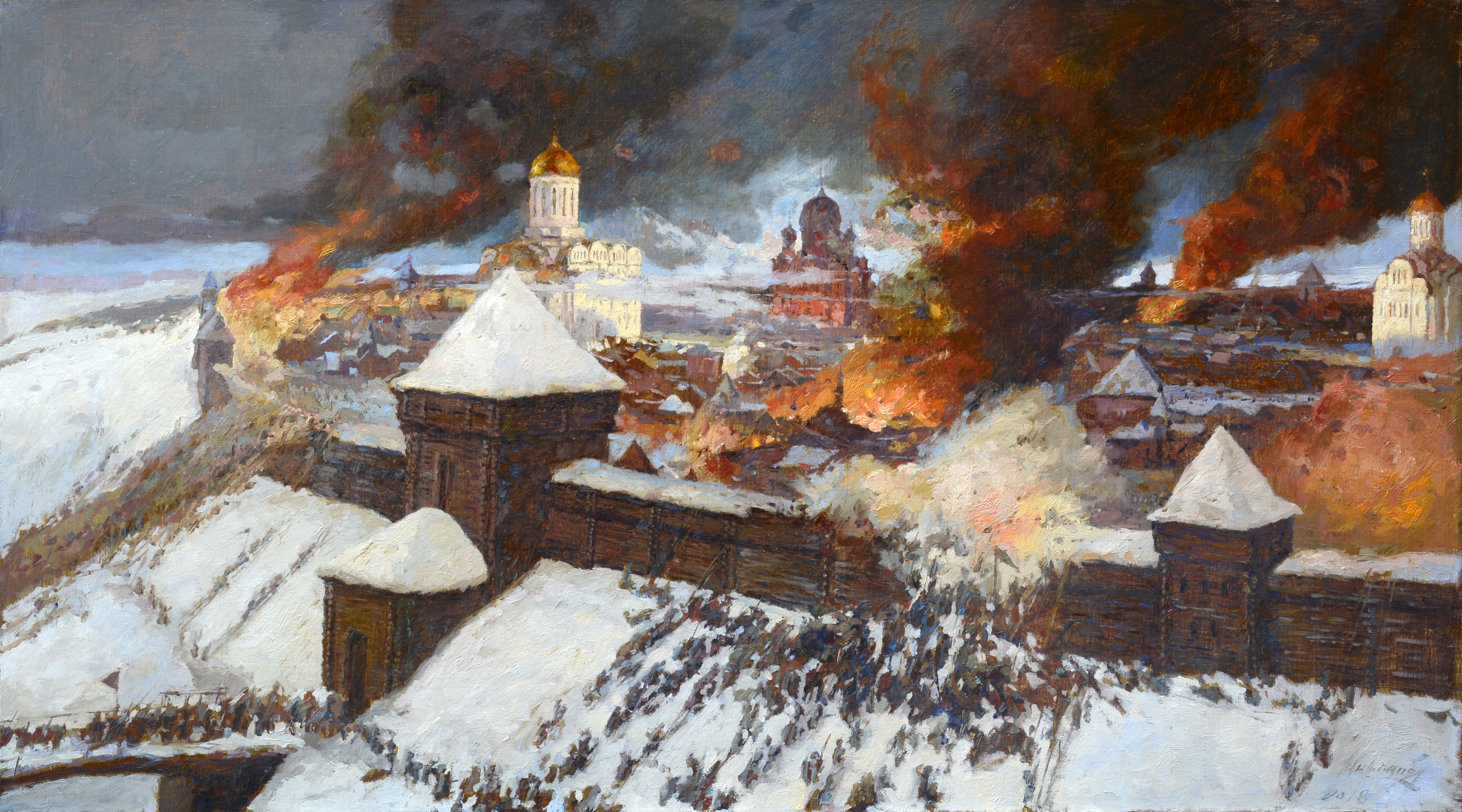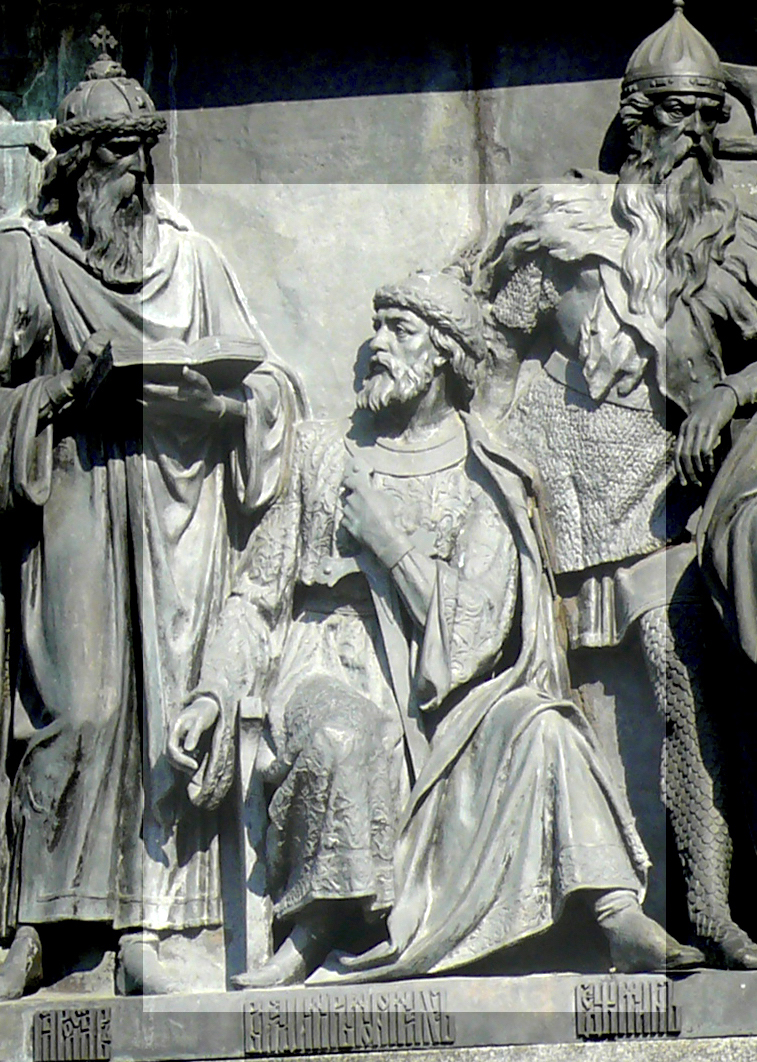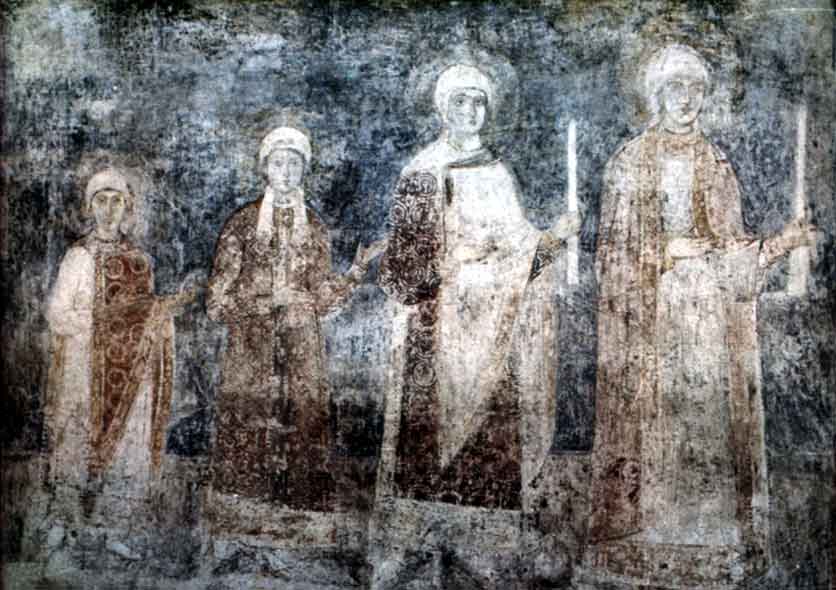|
Principality Of Murom
The Principality of Murom (), also referred to as the Murom-Ryazan Principality () until the mid-12th century, was a principality with its capital in Murom, now in Vladimir Oblast, Russia. Murom lay in an area that was strongly Finnic and for much of its medieval history, located in the homeland of the Muromians. In 1392, it was incorporated into the Grand Principality of Moscow. History It appears to have been an important Finnic settlement in the 9th century, with an archaeologically noticeable Scandinavian presence from the 10th century, as evidenced by Frankish swords, a tortoiseshell brooch and a sword chape. The ''Primary Chronicle'' alleges that Murom came under the control of the Rus' in the 9th century. Gleb Vladimirovich, son of Vladimir the Great, ruled the principality in the early 11th century. Murom was part of the territory of the Principality of Chernigov in the late 11th century, controlled by the Sviatoslavichi, the descendants of Yaroslav the Wise; probably ... [...More Info...] [...Related Items...] OR: [Wikipedia] [Google] [Baidu] |
Principality
A principality (or sometimes princedom) is a type of monarchy, monarchical state or feudalism, feudal territory ruled by a prince or princess. It can be either a sovereign state or a constituent part of a larger political entity. The term "principality" is often used to describe small monarchies, particularly those in Europe, where the ruler holds the title of prince or an equivalent. Historically, principalities emerged during the Middle Ages as part of the feudal system, where local princes gained significant power within a king's domain. This led to political fragmentation and the creation of mini-states. Over time, many of these principalities consolidated into larger Monarchy, kingdoms and empires, while others retained their independence and prospered. Sovereign principalities which exist today include Liechtenstein, Monaco, and the co-principality of Andorra. Additionally, some royal primogenitures, such as Asturias in Spain, are styled as principalities. The term is als ... [...More Info...] [...Related Items...] OR: [Wikipedia] [Google] [Baidu] |
Primary Chronicle
The ''Primary Chronicle'', shortened from the common ''Russian Primary Chronicle'' (, commonly transcribed ''Povest' vremennykh let'' (PVL), ), is a Rus' chronicle, chronicle of Kievan Rus' from about 850 to 1110. It is believed to have been originally compiled in or near Kiev in the 1110s. Tradition ascribed its compilation to the monk Nestor the Chronicler, Nestor (''Nestor's Chronicle'') beginning in the 12th century, but this is no longer believed to have been the case. The title of the work, ("Tale of Bygone Years") comes from the opening sentence of the Laurentian Codex, ''Laurentian'' text: "These are the narratives of bygone years regarding the origin of the land of Rus', the first princes of Kiev, and from what source the land of Rus' had its beginning". The work is considered a fundamental source for the earliest history of the East Slavs. The content of the chronicle is known today from the several surviving versions and codices, revised over the years, slightly var ... [...More Info...] [...Related Items...] OR: [Wikipedia] [Google] [Baidu] |
Pronsk, Pronsky District, Ryazan Oblast
Pronsk () is an urban locality (an urban-type settlement) and the administrative center of Pronsky District of Ryazan Oblast, Russia. Population: History Pronsk was first attested in chronicles in 1186. After Old Ryazan was destroyed by the Mongols, Pronsk remained the most prosperous town in the vicinity and long competed with Pereslavl-Ryazansky (now Ryazan) for the title of the most important center of the powerful Principality of Ryazan. Several times the local dynasty of princes assumed the throne in Ryazan. After the principality was absorbed by Muscovy in the early 16th century, one branch the princely family settled in the Polish–Lithuanian Commonwealth The Polish–Lithuanian Commonwealth, also referred to as Poland–Lithuania or the First Polish Republic (), was a federation, federative real union between the Crown of the Kingdom of Poland, Kingdom of Poland and the Grand Duchy of Lithuania .... Another branch was prominent in Muscovite politics until the end ... [...More Info...] [...Related Items...] OR: [Wikipedia] [Google] [Baidu] |
Mongol Invasion Of Kievan Rus'
The Mongol Empire invaded and conquered much of Kievan Rus' in the mid-13th century, sacking numerous cities such as Principality of Ryazan, Ryazan, Principality of Yaroslavl, Yaroslavl, Principality of Pereyaslavl, Pereyaslavl and Vladimir-Suzdal, Vladimir, including the largest: Grand Principality of Kiev, Kiev (50,000 inhabitants) and Principality of Chernigov, Chernigov (30,000 inhabitants). The Siege of Kiev (1240), siege of Kiev in 1240 by the Mongols is generally held to mark the end of the state of Kievan Rus', which had already been undergoing Feudal fragmentation, fragmentation. Many other principalities and urban centres in the northwest and southwest escaped complete destruction or suffered little to no damage from the Mongol invasion, including Kingdom of Galicia–Volhynia, Galicia–Volhynia, Pskov Land, Pskov, Principality of Smolensk, Smolensk, Principality of Polotsk, Polotsk, Principality of Vitebsk, Vitebsk, and probably Vladimir-Suzdal, Rostov and Uglic ... [...More Info...] [...Related Items...] OR: [Wikipedia] [Google] [Baidu] |
Liubech Conference
The Council of Liubech (sometimes referred to as the Liubech Conference) (, ) was one of the best documented princely meetings in Kievan Rus' that took place in Liubech (today in Chernihiv Oblast, Ukraine) on October 19, 1097. The council ended the (1093–1097) between Sviatopolk II of Kiev, Vladimir II Monomakh and Oleg I of Chernigov who fought for the heritage of his father Sviatoslav II of Kiev. The council, initiated by Vladimir Monomakh, brought together Sviatopolk II, Vasylko Rostyslavych, Davyd Sviatoslavich, Oleg I, and other Rus' princes. It aimed to stop the Chernigov war of succession, to pacify the people, and to present a unified front against the Polovtsy (Cumans). It resulted in the division of Kievan Rus' among the princes, letting their immediate families inherit them. This broke a rota system (''lestvichnoe pravo'') that had been followed in Kievan Rus' for two centuries which saw the oldest son take the throne and was ruled by a succession of the eldest. Furt ... [...More Info...] [...Related Items...] OR: [Wikipedia] [Google] [Baidu] |
Posadnik
A posadnik (, ) was a representative of the prince in some towns during the times of Kievan Rus', and later the highest-ranking official (mayor) in Novgorod (from 1136) and Pskov (from 1308). In the early 12th century, Novgorod won the right to elect its own posadnik, who was originally appointed by the prince to rule on his behalf during his absence, thus the posadnik became the elected burgomaster. In 1136, the prince Vsevolod was expelled and the Novgorod veche began to appoint and expel princes at its own will. The posadnik was so much of an official that the representative of the prince became known as the namestnik. Etymology The term ''posadnik'' appears to be derived from the early process of princely representation, when the prince placed (''posadi'') his men in towns such as Novgorod. History Novgorod Despite legends of posadniks such as Gostomysl that were set in the 9th century, the term ''posadnik'' first appears in the '' Primary Chronicle'' under the year 9 ... [...More Info...] [...Related Items...] OR: [Wikipedia] [Google] [Baidu] |
Oleg I Of Chernigov
Oleg Svyatoslavich (Russian language, Russian and Ukrainian language, Ukrainian: Олег Святославич; 1052 – 1 August 1115), nicknamed Gorislavich (Гориславич, literally "of famous woe") was a prince from Kievan Rus' whose equivocal adventures ignited political unrest in the country at the turn of the 11th and 12th centuries. He reigned as Prince of Chernigov from 1094 to 1097, and as Prince of Novgorod-Seversk from 1097 to 1115. He was the progenitor of the Olgovichi family. Early life and family Oleg was a younger son of Sviatoslav II of Kiev, Sviatoslav Iaroslavich, Prince of Chernigov and his first wife, Killikiya. He might have been either the second or the fourth among the four sons of Sviatoslav Iaroslavich by Killikiya, because their order of seniority is uncertain. According to historian Martin Dimnik, Oleg was born around 1050. Oleg was named after his grand uncle. His baptismal name was Michael. ''The Tale of Igor's Campaign'' styles hi ... [...More Info...] [...Related Items...] OR: [Wikipedia] [Google] [Baidu] |
Grand Prince Of Kiev
The Grand Prince of Kiev (sometimes also Grand Duke) was the title of the monarch of Kievan Rus', residing in Kiev (modern Kyiv) from the 10th to 13th centuries. In the 13th century, Kiev became an appanage principality first of the grand prince of Vladimir and the Mongol Golden Horde governors, and later was taken over by the Grand Duchy of Lithuania. Rus' chronicles such as the ''Primary Chronicle'' are inconsistent in applying the title "grand prince" to various princes in Kievan Rus'. Although most sources consistently attribute it to the prince of Kiev, there is no agreement which princes were also "grand prince", and scholars have thus come up with different lists of grand princes of Kiev. Background Origins According to a founding myth in the ''Primary Chronicle'', Kyi, Shchek and Khoryv and their sister Lybid co-founded the city of Kiev (Kyiv), and the oldest brother Kyi was "chief of his kin" (). Some western historians (i.e., Kevin Alan Brook) suppose that Kie ... [...More Info...] [...Related Items...] OR: [Wikipedia] [Google] [Baidu] |
Prince Of Chernigov
The Prince of Chernigov () was the ''kniaz'', the ruler or sub-ruler, of the Rus' people, Rus' Principality of Chernigov, a lordship which lasted four centuries straddling what are now parts of Ukraine, Belarus and the Russian Federation. List of princes * Mstislav of Chernigov, 1024–1036 * Sviatoslav II of Kiev, Sviatoslav I, 1054–1073 * Vsevolod I of Kiev, Vsevolod I, 1073–1076 * Vladimir Monomakh, Vladimir I Monomakh, 1076–1077 * Boris Vyacheslavich, Boris, 1077 * Vsevolod I of Kiev, Vsevolod I (again), 1077–1078 * Oleg I of Chernigov, Oleg I, 1078 * Vladimir Monomakh, Vladimir I Monomakh (again), 1078–1094 * Oleg I of Chernigov, Oleg I, 1094–1097 * Davyd Sviatoslavich, 1097–1123 * Yaroslav Sviatoslavich, 1123–1127; sometimes identified with Constantine of Murom (died 1129), but whether the two men are one and the same person is uncertain. * Vsevolod II of Kiev, Vsevolod II, 1127–1139 * Vladimir II Davydovich, 1139–1151 * Iziaslav III of Kiev, Iziaslav I, ... [...More Info...] [...Related Items...] OR: [Wikipedia] [Google] [Baidu] |
Vsevolod I Of Kiev
Vsevolod I Yaroslavich (; – 13 April 1093) was Grand Prince of Kiev from 1078 until his death in 1093. Early life He was the fifth and favourite son of Yaroslav I the Wise by Ingigerd Olafsdottir. He was born around 1030. On his seal from his last years, he was named "Andrei Vsevolodu" in Greek, implying that his baptismal name was Andrew. To back up an armistice signed with the Byzantine Emperor Constantine IX Monomachos in 1046, his father married Vsevolod to a Byzantine princess, who according to tradition was named Anastasia or Maria. That the couple's son Vladimir Monomakh bore the family name of the Byzantine emperor suggests she was a member of his close family, but no contemporary evidence attests to a specific relationship and accounts of the Emperor give him no such daughter. Upon his father's death in 1054, he received in appanage the towns of Pereyaslav, Rostov, Suzdal, and the township of Beloozero which would remain in possession of his descendants ... [...More Info...] [...Related Items...] OR: [Wikipedia] [Google] [Baidu] |
Yaroslav The Wise
Yaroslav I Vladimirovich ( 978 – 20 February 1054), better known as Yaroslav the Wise, was Grand Prince of Kiev from 1019 until his death in 1054. He was also earlier Prince of Novgorod from 1010 to 1034 and Prince of Rostov from 987 to 1010, uniting the principalities for a time. Yaroslav's baptismal name was George after Saint George. Yaroslav was a son of Vladimir the Great and Rogneda of Polotsk. Yaroslav ruled the northern lands around Rostov before being transferred to Novgorod in 1010. He had a strained relationship with his father and refused to pay tribute to Kiev in 1014. Following Vladimir's death in 1015, Yaroslav waged a complicated war for the Kievan throne against his half-brother Sviatopolk, ultimately emerging victorious in 1019. As the Grand Prince of Kiev, Yaroslav focused on foreign policy, forming alliances with Scandinavian countries and weakening Byzantine Empire, Byzantine influence on Kiev. He successfully captured the area around present-day Tartu ... [...More Info...] [...Related Items...] OR: [Wikipedia] [Google] [Baidu] |
Principality Of Chernigov
The Principality of Chernigov was one of the largest and most powerful states within Kievan Rus'. For a time the principality was the second most powerful after the Principality of Kiev. The principality was formed in the 10th century and maintained some of its distinctiveness until the 16th century. The Principality of Chernigov consisted of regions of modern-day Ukraine, Belarus, and Russia. Location Most of the Principality of Chernigov was located on the left bank of the river Dnieper, within the basins of the Desna and Seim rivers. The principality was supposedly populated by mostly Slavic tribes of Siverians and partially by the Dnieper Polans. Later the territory of the principality extended to the lands of the Radimichs and partially the Vyatichs and Drehovichs. The capital of the principality was the city of Chernigov, the other main important cities were Novgorod-Seversky, Starodub-Seversky, Trubchevsk and Kozelsk. Ownership and influence of the Chernigov Pr ... [...More Info...] [...Related Items...] OR: [Wikipedia] [Google] [Baidu] |





